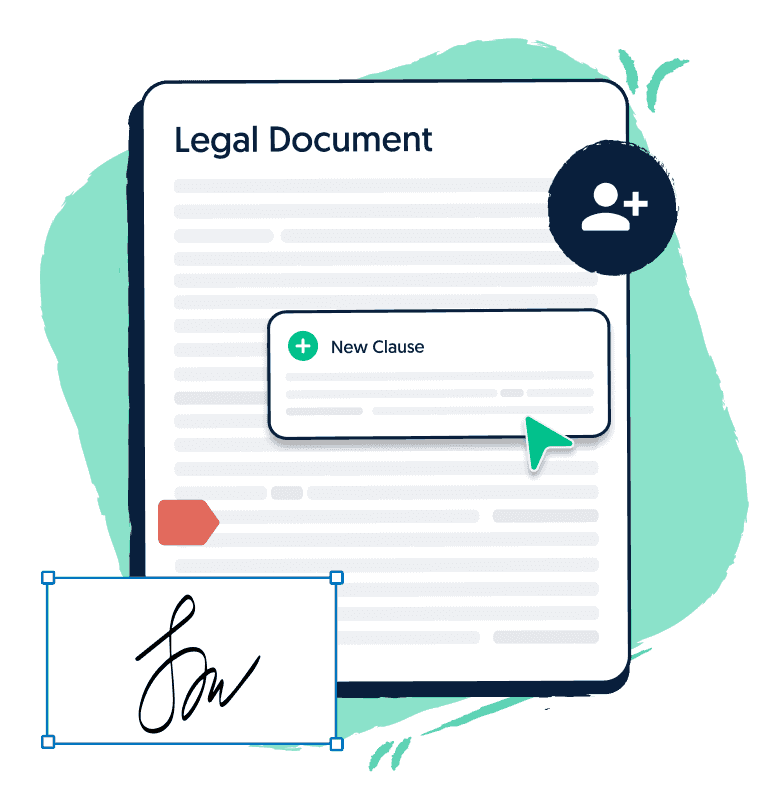💡 Key insights
- The compulsory superannuation guarantee rate increases to 12 percent from 1 July 2025 which raises the minimum employer contribution for all eligible workers.
- The transfer balance cap increases to 2.0 million which means individuals can place a larger amount into a tax free retirement phase account.
- Individuals with total super balances above 3 million may face an additional tax on earnings that exceed this threshold which affects high balance account holders.
- Superannuation guarantee contributions will apply to government funded paid parental leave from 1 July 2025 which supports stronger retirement savings for parents during leave periods.
The end of the financial year (EOFY) is fast approaching, which means it’s time to start getting your finances in order.
Major superannuation changes have already been introduced this year, and a few more have been said to trickle in on the 1st of July 2022 for the next Australian financial year.
Why is this important information for entrepreneurs?
Changes in superannuation will have implications for your business’s finances, so it’s now the time to make sure you’re well prepared for the 1st of July.
We have provided a quick overview of all the changes you need to know.
Read along to stay ahead of the game.
What is superannuation?
Before we get into the changes coming your way this EOFY, it’s important to understand what superannuation is.
In short, superannuation is the payments you need to make on behalf of your eligible employees into their super fund. This is in addition to the employee’s wage.
The law requires you to make this payment at least once every three months.
Sign up for our newsletter and be the first to find hand-picked articles on topics that we believe are crucial to successfully scale your unique small business.
Superannuation changes 2022: What’s changing, and how will it affect you?
As part of Australia’s federal government’s budget update, there are a few superannuation changes to be mindful of before the EOFY.
What are the changes, and how will they affect you? Let’s go through them:
1. Superannuation guarantee (SG)
The superannuation guarantee is the contribution that you as an employer must make into a super fund that either your employees or you have chosen.
The change is that the superannuation guarantee (SG) rates will increase from 10% to 10.5%.
This will require you to alter the existing percentage you contribute to your employee’s super fund to accommodate the percentage change.
Keep an eye out for future updates as the SG percentage rate will continue to increase until it reaches 12%.
2. Superannuation guarantee threshold removed
Another fundamental change to be aware of before the EOFY is that from the 1st of July, the $450 threshold will be removed.
What this means for business owners is that if you have employees over the age of 18 or over, you will need to pay them superannuation guarantees regardless of how much they earn.
If you have employees under 18, you will only need to pay a super guarantee if they work more than 30 hours a week.
As an employer, you need to make sure that your business’s payroll system accommodates this change, so you don’t accidentally underpay superannuation for your employees.
3. Work test is no longer applicable
From 1 July 2022, all employees will be able to make or receive non-concessional or salary sacrifice superannuation contributions from you without meeting the work test.
The work test previously required an employee to be gainfully employed for 40 hours to make non-concessional contributions and be over 65.
This will no longer apply unless it relates to a personal tax-deductible contribution.
As a business owner, you need to ensure that all your employees now receive non-concessional or salary sacrifice superannuation contributions.
4. Other superannuation changes 2022 to be aware of
Other than the 3 main superannuation changes 2022 to be aware of, here are other changes to be aware of
- Streamlined payments reporting for tax returns — In 2019, the Australian Taxation Office (ATO) introduced the Single Touch Payroll reporting. The second phase has been introduced this year to make it easier for employers to report payment details about their employees, e.g. gross income, personal contributions, selected superannuation fund, income stream
- Downsizer contributions – Individuals now aged 60 will be able to make tax-free downsizer contributions to their super from the sale of their homes. The eligibility requirements have changed from 65 years to 60 years
- First Home Super Saver Scheme — First home buyers who meet certain criteria can withdraw an extra $20,000 from their super to put toward a down payment on their own home
- Super account — When hiring new employees, your employees will be able to keep the same super fund account rather than opening up a new super account each time they get a new job. This will save both your employees and business time and paperwork.
- Transfer balance cap — From the 1st of July 2022, the transfer balance cap will be indexed from the current $1.6 million to $1.7 million
How will these changes impact businesses & how can they be addressed?
The superannuation changes 2022 may impact your business in many ways, so it’s essential to be on top of it before the EOFY.
Here is a summary of everything you need to be aware of:
- Look out for future updates on the SG percentage rate, as it will to rise again
- Ensure your payroll system accommodates the superannuation changes, so you don’t underpay superannuation to your employees.
- There may be additional costs associated with the increased superannuation changes, so budget your business accordingly
- This change will primarily impact businesses that hire young, part-time workers, particularly in the hospitality and retail industries
5 tips for getting superannuation payments right this end of financial year (EOFY)
Many superannuation changes 2022 are coming your way. With this in mind, we’ve prepared 4 tips that you can implement to ensure superannuation is dealt with right this EOFY.
1. Make your employee’s payments on time
The key consideration is to ensure that you pay your employee’s superannuation on time. If you fail to do so or underpay your employee’s super, your employee can make a complaint to the ATO.
Paying on time means
- pay super for the relevant employees within 28 of the end of the quarter; or
- at least once every three months
Say if you miss this timeframe, what happens then?
Your business will need to pay interest on the funds until the full amount is paid out. To prevent paying interest, it’s important to always stay on top of your employees’ superannuation.
2. Utilise technological software
Technological software is another excellent way to automate the reporting process in your business to ensure you pay your employees super contributions.
If you’re unsure which software to use, we’ve recommended some for you:
- Accounting Software – You can use accounting software, like MYOB, that complies with relevant government regulations. If you do need specialised software, we’ve partnered with MYOB, where you can save time and money with up to 6 months of MYOB free.
- Clear house – A clear house is an online portal that will help you pay your employees’ superannuation in bulk as well as collect necessary information from your employees
- The superfund itself – You can get assistance from the superfund your business partners with
3. Staying across recent superannuation changes
We’ve already covered the key superannuation changes for this EOFY. However, it’s vital for you to always be on the lookout too.
Staying on top of superannuation changes is essential for business owners as it will impact when and how much superannuation you need to pay your employees.
4. Salary Packaging
You can implement a wide range of tax minimisation strategies that will help you and your employees. For example:
- Salary packaging or salary sacrifice contributions — Salary sacrifice is when your employee chooses to give up a portion of their salary for it to go into their super fund. As an employer, you can select the amount to contribute to your employees’ super.
- Fringe benefits – A fringe benefit is a non-cash incentive paid to employees on top of their salary.
5. Financial planning
As an owner, investing in financial planning will ensure that you are on top of all your finances and present obligations, such as the changes to superannuation. Other benefits of financial planning include:
- Ability to make improvements and predict legal problems
- Increased clarity, focus and decision making
- Manage finances with confidence
Frequently asked questions (Q&As)
What is a concessional contribution cap?
Concessional contributions, also known as pre-tax, are contributions that are made into your super fund before tax.
These include contributions made by an employer, such as the super guarantee, as well as any personal contributions that have tax deduction claims.
What is a spouse contribution?
A spouse contribution allows one individual to make an after-tax or voluntary contribution from their own money to their spouse’s super account.
What is taxable income?
Taxable income, also known as tax income, is the income used to calculate the tax owed by an individual or business.
What does tax offset mean?
A tax offset reduces the tax an individual pays on their taxable income. A taxable income is the total income minus any deductions an individual claims.
How can I check my superannuation balance?
The best way to check your superannuation balance is through your myGov account linked to the ATO. Through your account, you will be able to check to see if the ATO is holding any super for you.
Key takeaways
With the EOFY right around the corner, understanding the superannuation changes 2022 will give your business the advantage it needs to stay ahead.
To summarise, here are the key changes set and the new ones to look out for:
- Superannuation guarantee (SG) rates will increase from 10% to 10.5%
- From the 1st of July 2022, the $450 threshold will be removed
- From 1 July 2022, all employees will be able to receive salary sacrifice superannuation contributions from you without meeting the work test
- Individuals aged 60 will be able to make tax-free downsizer contributions to their super from the sale of their homes
- First home buyers who meet certain criteria can withdraw an extra $20,000 from their super to put toward a down payment on their own home
- Your employees will be able to keep the same super fund account rather than opening up a new super account each time they get a new job
- From the 1st of July 2022, the transfer balance cap will be indexed from the current $1.6 million to $1.7 million
If you want to learn more about how you can best manage any new legal changes or identify gaps in your business so you’re always prepared, you can hire a lawyer to ensure your needs are met.

Get a free legal document when you sign up to Lawpath
Sign up for one of our legal plans or get started for free today.






